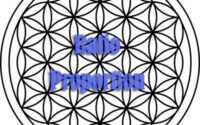Height and Distance Questions and Answers
Height and Distance Questions and Answers Papers pdf in Quantitative Aptitude is available here for download. Therefore, all the contenders can make use of this chance and start to download the Height and Distance Questions Solved Papers. Because by solving the Height and Distance Aptitude Questions Model Papers you can improve your Quantitative Aptitude knowledge. So, you start preparing on the Sample Papers from now itself.

Also, check for download the Simple Height and Distance Questions and Answers Papers with Solutions from the link provided below as soon as it is released by the Height and Distance Questions for SSC. The Height and Distance Questions for IIFT Solved Question Papers helps you to prepare well for the exam topic wise and obtain very good marks. Therefore, go through this post thoroughly and download the Simple Height and Distance Questions and Answers Papers.
Click on the links given below to go to particular Problems on Height and Distance question paper pdf. However, before starting your preparation we advise to check the complete Height and Distance Aptitude syllabus on Quantitative Aptitude. Problems on Height and Distance Quantitative Aptitude question paper direct download links.
All these question papers given below are collected from MAT, CAT, IIFT, SSC, GRE, Bank, IBPS, PSC, CBSE, NCERT and other competitive exam’s previous year questions.
Model Questions and Answers on Height and Distance
1. A 25 m ladder is placed against a vertical wall of a building. The foot of the ladder is 7 m from the base of the building. If the top of the ladder slips 4 m, then the foot of the ladder will slide:
- 5m
- 8m
- 9m
- 15m
2. The angles of elevation of the top of a tower from two points at distances m and n metres are complementary. If the two points and the base of the tower are on the same straight line, then the height of the tower is:
- \sqrt {mn}
- \frac {m }{n }
- mn
- None of these
3. The angles of elevation of an artificial satellite measured from two earth stations are 30° and 40°, respectively. If the distance between the earth stations is 4000 km, then the height of the satellite is:
- 2000 km
- 6000 km
- 3464 km
- 2828 km
4. The angle of elevation of the sun when the length of the shadow of a pole is √3 times the height of the pole is:
- 30°
- 45°
- 60°
- 75°
5. The distance between the tops of two trees 20 m and 28 m high is 17 m. The horizontal distance between the two trees is:
- 9m
- 11m
- 15m
- 31m
6. A tree breaks due to storm and the broken part bends so that the top of the tree first touches the ground, making an angle of 30 with the horizontal. The distance from the foot of the tree to the point where the top touches the ground is 10 m. The height of the tree is:
- 10(√3+1) m
- 10√3 m
- 10(√3-1) m
- 10/(√3) m
7. The angle of elevation of an aeroplane from a point on the ground is 45°. After 15 seconds flight, the elevation changes to 30°. If the aeroplane is flying at a height of 3000 m, the speed of the plane in Km/h is:
- 208.34
- 306.72
- 402.056
- 527
8. A vertical lamp post of height 9 m stands at the corner of a rectangular field. The angle of elevation of its top from the farthest corner is 30°, while from another corner it is 45°. The area of the field is:
- 9√2 {m }^{2 }
- 81√2 {m }^{2 }
- 8√3 {m }^{2 }
- 9√3 {m }^{2 }
9. A flagstaff stands vertically on a pillar, the height of the flagstaff being double the height of the pillar. A man on the ground at a distance finds that both the pillar and the flagstaff subtend equal angles at his eyes. The ratio of the height of the pillar and the distance of the man from the pillar is:
- 1:3
- 3:1
- 1: √3
- √3:2
10. The angles of elevation of the top of a tower 30 m high, from two points on the level ground on its opposite sides are 45° and 60°. What is the distance between the two points?
- 47.32 m
- 41.23 m
- 38.12 m
- 52.10 m
11. What is the height of a tower if the angles of elevation of its top from two points x and v at distances of a and b respectively from the base and on the same straight line with the tower are complementary?
- \frac {√b }{a }
- \frac {√a }{√b }
- \sqrt {ab }
- None of these
12. An observer standing 72 m away from a building notices that the angles of elevation of the top and the bottom of a flagstaff on the building are respectively 60° and 45°. The height of the flagstaff is:
- 124.7 m
- 52.7 m
- 98.3 m
- 73.2m
13. A ladder 25 m long is placed against a wall with its foot 7 m away from the foot of the wall. How far should the foot be drawn out so that the top of the ladder may come down by half the distance of the total distance if the foot is drawn out?
- 6m
- 8m
- 8.75 m
- None of these
14. A ladder is resting against a wall at height of 10m. If the ladder is inclined with the ground at an angle of 30°, then the distance of the foot of the ladder from the wall is
- 10√3m
- 20√3m
- 10/√3m
- 20/√3m
15. P and Q are two points observed from the top of a building 10/3 m high. If the angles of depression of the points are complementary and PQ = 20 m, then the distance of P from the building is
- 25m
- 45m
- 30m
- 40m
Read More Questions on Aptitude
16. A tree is broken by the wind. If the top of the tree struck the ground at an angle of 30° and at a distance of 30 m from the root, then the height of the tree is
- 25√3 m
- 30√3 m
- 15√3m
- 20√3 m
17. A boy standing in the middle of a field, observes a flying bird in the north at an angle of elevation of 30° and after 2 minutes, he observes the same bird in the south at an angle of elevation of 60°. If the bird flies all along in a straight line at a height of 50√3 m, then its speed in km/h is:
- 45
- 3
- 9
- 6
18. The angles of elevation of the top of a tower standing on a horizontal plane from two points on a line passing through the foot of the tower at a distance 9 ft and 16 ft respectively are complementary angles. Then the height of the tower is
- 9ft
- 12 ft
- 16 ft
- 144 ft
19. The length of the shadow of a vertical tower on level ground increases by 10 metres when the altitude of the sun changes from 45° to 30°. Then the height of the tower is
- 10√3m
- 5√3m
- 10(√3+1)m
- 5(√3+1)m
20. The tops of two poles of height 24 m and 36 m are connected by a wire. If the wire makes an angle of 60° with the horizontal, then the length of the wire is
- 8m
- 6√3m
- 6m
- 8√3m
21. From 125 metre high towers, the angle of depression of a car is 45°. Then how far the car is from the tower?
- 125 metre
- 60 metre
- 75 metre
- 95 metre
22. If the angles of elevation of a balloon from two consecutive kilometre – stones along a road are 30° and 60″ respectively, then the height of the balloon above the ground will be
- \frac {√3 }{2 } km
- \frac {1 }{2 } km
- \frac { 2}{ √3} km
- 3√3 km
23. A kite is flying at a height of 50 metre. If the length of string is 100 metre then the inclination of string to the horizontal ground in degree measure is
- 90°
- 60°
- 45°
- 30°
24 From the top of a light-house at a height 20 metres above sea-level, the angle of depression of a ship is 30°. The distance of the ship from the foot of the light-house is
- 20 m
- 20√3 m
- 30 m
- 30√3 m
25. A vertical pole and a vertical tower are standing on the same level ground. Height of the pole is 10 metres. Form the top of the pole is the angle of elevation of the top of the tower and angle of depression of the foot of the tower are 60° and 30° respectively. The height of the tower is
- 20m
- 30m
- 40m
- 50m
26. The shadow of a tower standing on a level plane is found to be 30 m longer when the Sun’s altitude changes from 60° to 45°. The height of the tower is
- 15(3+√3)m
- 15(√3+1)m
- 15(√3-1)m
- 15(3-V3)m
27. The shadow of a tower standing on a level plane is found to be 40m longer when the sun’s altitude is 45° than when it is 60°. The height of the tower is:
- 30(3+V3)m
- 40(3+√3)m
- 10(3+√3)m
- 20(3+√3)m
28. From two points on the ground and lying on a straight line through the foot of a pillar, the two angles of elevation of the top of the pillar are complementary to each other. If the distances of the two points from the foot of the pillar are 12 metres and 27 metres and the two points lie on the same side of the pillar, then the height (in metres) of the pillar is:
- 16
- 12
- 15
- 18
29. A 10 m long ladder is placed against a wall. It is inclined at an angle of 30° to the ground. The distance (in m) of the foot of the ladder from the wall is (Given √3 = 1.732)
- 7.32
- 8.26
- 8.66
- 8.16
30. A pilot in an aeroplane at an altitude of 200 m observes two points lying on either side of a river. If the angles of depression of the two points be 45° and 60°, then the width of the river is in meter
- 200+\frac {200 }{√3 }
- 200-\frac {200 }{√3 }
- 400√3
- \frac {400 }{√3 }



